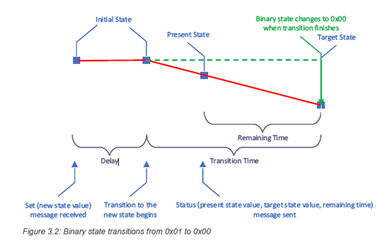Hi,
Quick question:
I read in this article on the section "A tough world of lighting controls" it states the following:
"Let's say that five messages are spaced 20 ms apart. The first one goes out at T=0 with the Delay set to 100 ms. The second is sent at T=20 ms with the Delay set to 80 ms. The scheme repeats until the fifth message is sent at T=100 ms with the Delay set to 0. Now, regardless of which one is picked by a given light, all lights will turn on at exactly the same time. "
Does the nRF5 SDK for Mesh have such implementation?
Thank you in advance.
Regards



